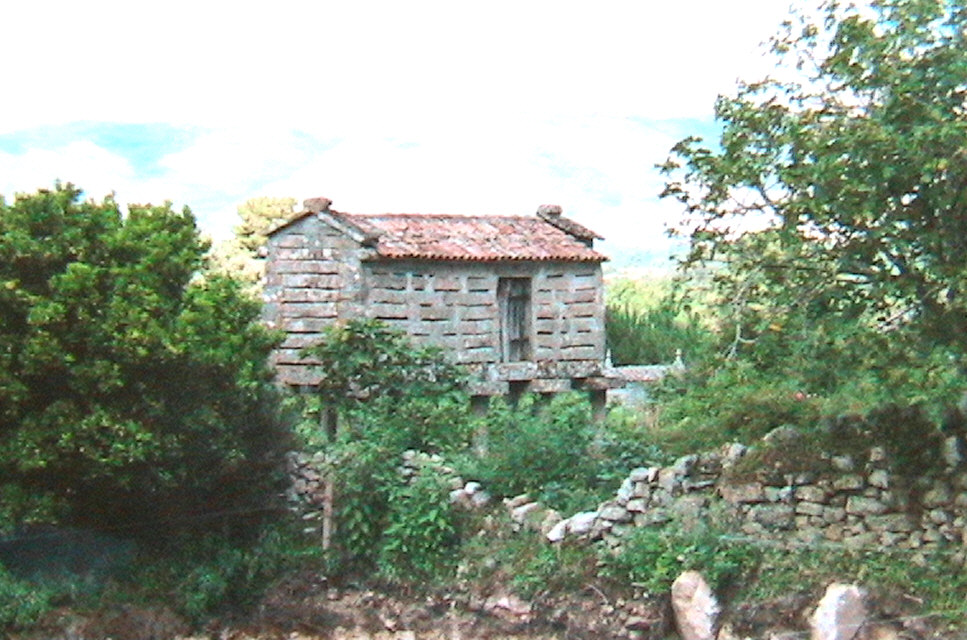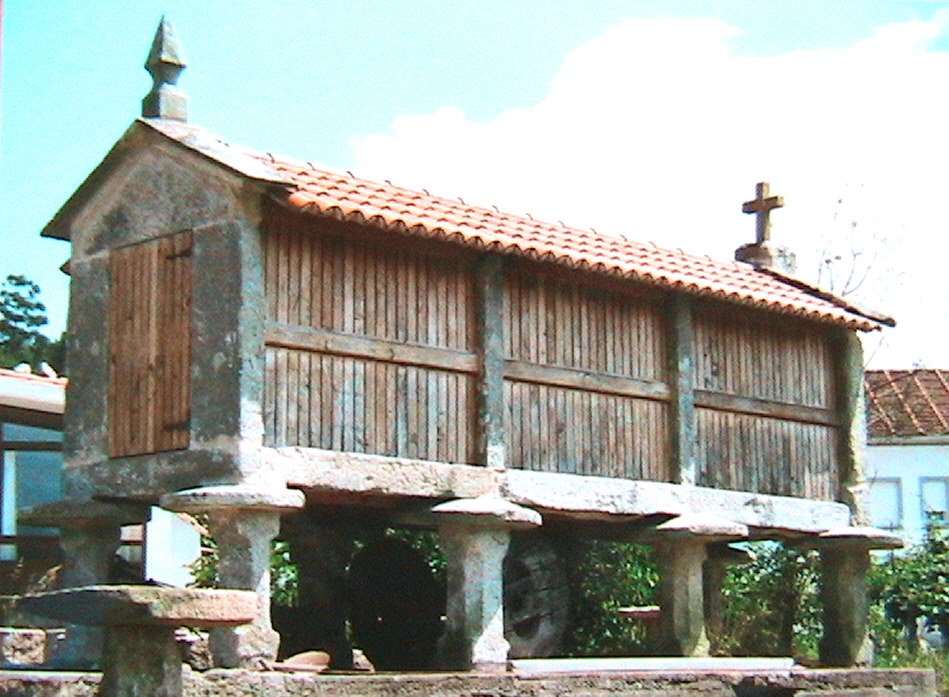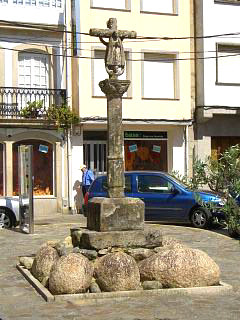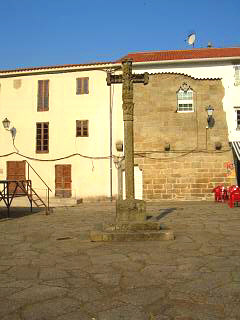Architectural Landmarks of Galicia Spain
In keeping with many other regions in Spain, Galicia has some distinctive "man-made" features that identify its landscape. Two of those you will spot frequently are the "Horreos" and "Cruceiros". Their prominence however relates to their frequency rather than their size and you will become aware of them almost as soon as you start to explore this region - if you look!
Grain stores or "Horreos"

The first is the unofficial Symbol of Galicia known as the "horreos". These are usually long narrow grain stores (or granaries) used to protectively hold and ripen all forms of grain and farm produce. Sweet corn was the most common crop to be stored in them, but they will take just about anything.
Right, this is a very old "horreos" in Lousame.
The reason "horreos" are so significant is because of their unique and distinctive appearance and the fact that they harmonise so well within the countryside in which they are built. They range in size from as little as 1 metre to in excess of 10 metres in length and some are even a double storey in height. The most famous horreo is the "Carnota horreo" which is around 20 metres long and built entirely of granite (bar the roof). Traditionally they are made of granite, elevated on legs with rodent proof soffits, and timber or granite side panels. The roof is usually tiled and there is a small cross at one (and possibly) both ends. Access is gained by either, swing doors at the narrow ends, or the removal of the wooden side panels.

With the scale of modern agriculture, the horreos are no longer practical storage units and are not constructed for farming use anymore. That said, they remain as popular as ever and the bonus of having one in a plot of land, associated with a property, is seen as highly desirable. Many property owners will also pay to have an old horreos "made good" or a new one constructed, purely for show.
Above, this apparently old Galician "horreos" was in fact "built to order" and stands outside a new restaurant in the Noia-Muros bay area (photo taken 2002).
Stone crosses or “cruceiros”
The second small, but distinctive Galician landmark, makes the grain stores look like sky scrapers by comparison. These features are the "cruceiros", or small stone crosses on long slender shafts. They can be found in a town or city's central plaza or at some random point on a highway, usually a cross roads.

There are three different types of "Cruceiro", the "Carral", which is regarded as the most important (in terms of symbolism), the "Melide" which is the oldest and the "Hio" which is visually the most impressive and grand. Unfortunately, despite asking questions at tourist offices and other knowledgable sources, we have been unable to find a visual means of determining which is which.
Their exact history of the "cruceiro" is uncertain, but they can be used to mark a significant social or religious area such as a square, be a memorial to an event or person, or indicate a path or street. Historically, the oldest cruceiros are said to date back to the fourteenth century and have continued to be built into the 20th century. It is impossible to spend any time in Galicia without seeing them.

The cruceiro to the right, whilst simple in appearance, is in a very significant spot in the "Tapal" square in front of "San Martino" church in Noia. It appears to have held its present spot for centuries, but although old in itself, was relocated to its current postion quite recently.

